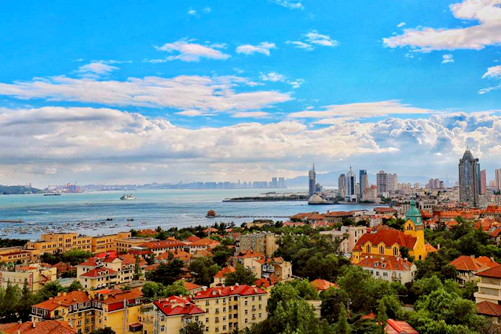China-South Korea land, sea combined transport boosts trade in Qingdao
Recently a roll-on/roll-off (ro-ro) ship slowly docked at the Qingdao Dagang Wharf, and 12 South Korean trailers loaded with imported electronic equipment entered the customs supervision area.
After completing the customs formalities, the trailers changed into domestic tractors and then drove to a Wuxi factory in Jiangsu province. The whole process only took less than three hours.

The Qingdao terminal of the China-South Korea land and sea combined transport [Photo/Guanhai News]
This marked the epitome of the daily business of the China-South Korea land and sea combined transport. The freight trailers are carried into each other's territory by a ro-ro ship, and then directly transported to the destination by local tractors.
The Qingdao channel of the China-South Korea land and sea combined transport was put into operation in 2011. Relying on the convenient and efficient supervision of the local customs, as well as the advantages of the two-way ro-ro shipping route from Qingdao to Incheon, the business volume of the Qingdao channel is increasing each year.
Official statistics show that more than 4,000 vehicles have entered or exited through the Qingdao channel, involving cargos worth more than $1.8 billion.
"The Qingdao channel has gradually become the preferred cross-sea logistics method for precision instruments, semiconductor accessories and large and medium-sized sophisticated equipment," a local customs official said.
The shortest distance between Shandong and South Korea is less than 200 nautical miles. There are currently nine passenger and cargo lines between the two sides, accounting for more than half of the country's total.
More than 50 passenger and cargo ships travel between Shandong and South Korea every week, forming a "maritime expressway" with "shipping price and air freight speed".









 Play
Play  Play
Play